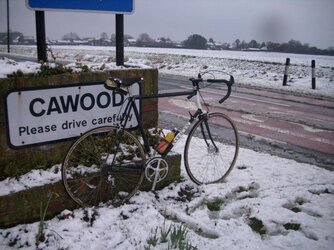Cotterless cranksYes, it does seem amazing that there hasn't been much progress on weight in the last fifty years, not only that but components are still more or less the same as they were then.
Cartridge bearings
LED lights
Indexed gears
Clipless pedals
Working brakes (dual pivot calipers, better compounds, alloy rims)


